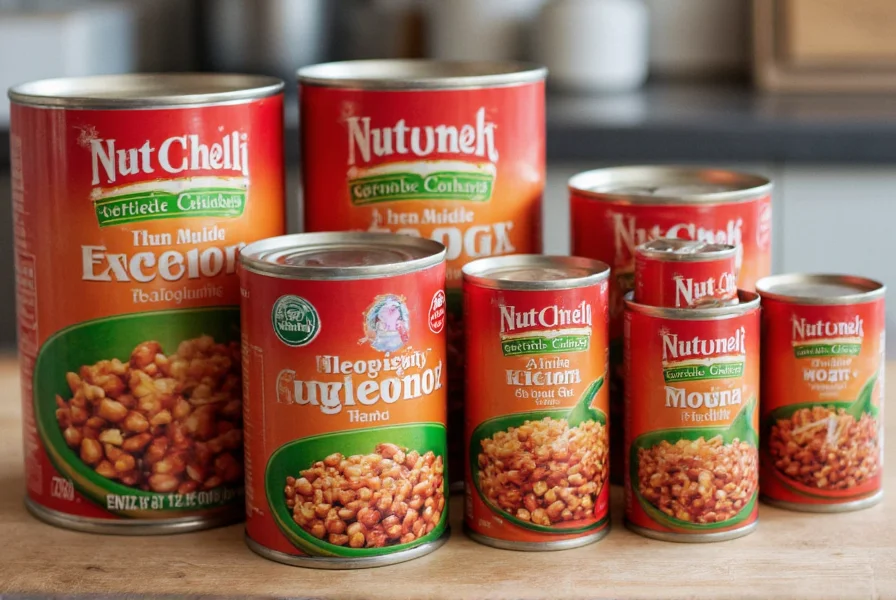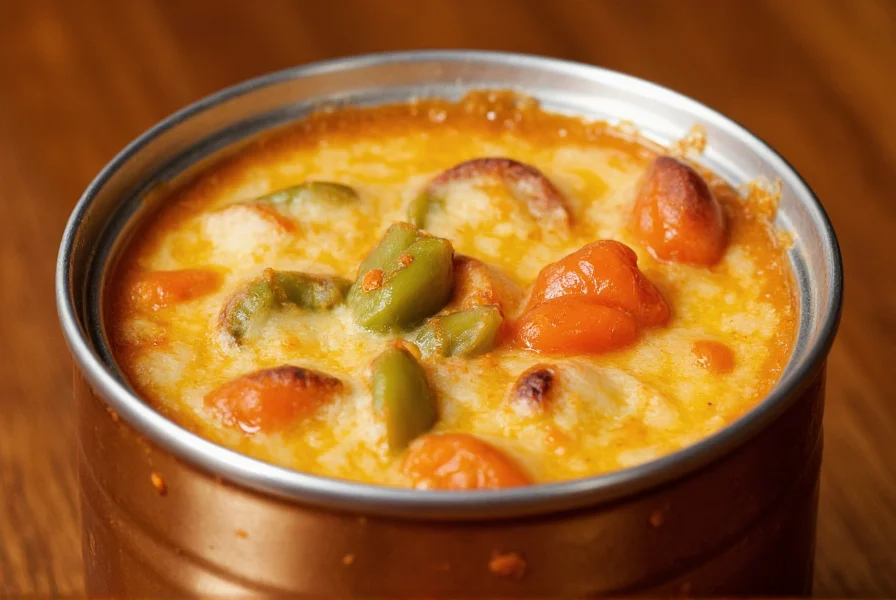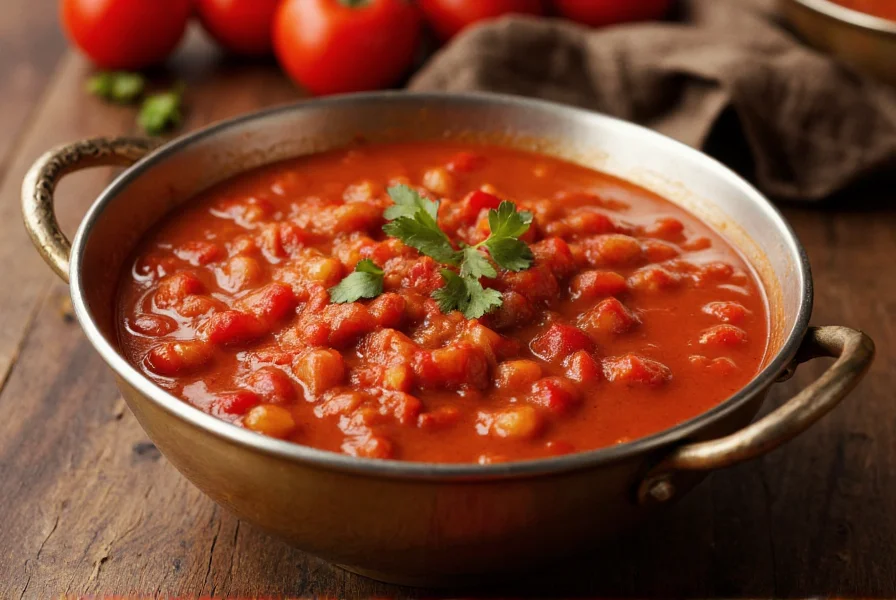Understanding what constitutes a proper chili can goes beyond simply recognizing the metal container. This comprehensive guide explores the various aspects of chili cans from production to consumption, helping you make informed decisions whether you're stocking your pantry or creating homemade preserved chili.
What Exactly Is a Chili Can?
When discussing chili cans, we're primarily referring to commercially processed chili con carne sealed in airtight metal containers. These cans preserve the food through a combination of heat sterilization and oxygen removal. The standard canning process involves filling sanitized cans with prepared chili, exhausting air, sealing with a double-seam closure, and then undergoing thermal processing to destroy microorganisms.
It's important to distinguish between canned chili (the food product inside) and chili cans (the containers themselves). Many people search for "chili can" when they actually mean either the food product or containers suitable for storing homemade chili.

Types of Chili Cans and Their Characteristics
Chili cans come in several standard sizes, each serving different purposes:
| Can Size | Capacity | Common Uses | Dimensions (Diameter x Height) |
|---|---|---|---|
| #1 (Picnic) | 10-12 oz | Single servings, camping | 2.6" x 4" |
| #2 (Standard) | 14-16 oz | Family meals, retail sales | 3.25" x 4.25" |
| #3 (Tall) | 24-26 oz | Large family meals, food service | 3.25" x 5.5" |
| #10 (Institutional) | 68 oz | Commercial kitchens, emergency storage | 6.3" x 7" |
Material Composition and Safety
Modern chili cans typically use steel with a thin protective lining. The interior coating prevents metal migration into the acidic chili contents. Most commercial cans now use BPA-free linings due to health concerns, though regulations vary by country.
When selecting chili cans for home canning purposes, food-grade metal containers with proper sealing mechanisms are essential. Never reuse commercial food cans for home preservation as they lack the proper sealing technology and may contain residual chemicals from the original manufacturing process.

Shelf Life and Storage Guidelines
Properly stored canned chili maintains best quality for 2-5 years. The actual shelf life depends on several factors:
- Storage temperature: Ideal conditions are below 75°F (24°C); higher temperatures accelerate quality degradation
- Can integrity: Dents, bulges, or rust compromise safety
- Acidity level: Higher acidity (from tomatoes) affects longevity
- Preservatives: Commercial products often contain additional preservatives
Always inspect cans before use. Discard any container showing signs of damage, leakage, or bulging. When opening home-canned chili, listen for the proper "pop" indicating vacuum seal release. If the seal doesn't break or the contents appear spoiled, do not consume.
Creative Uses for Chili Cans Beyond Storage
While primarily designed for food preservation, chili cans offer several secondary applications:
- Emergency cooking vessels: Cleaned empty cans can serve as makeshift pots when camping or during emergencies
- Gardening containers: Punch drainage holes for small plant starters
- Organizational tools: Store small kitchen items like utensils or craft supplies
- DIY projects: Transform into candle holders or pencil cups with proper preparation
When repurposing chili cans, always remove labels completely and sand sharp edges to prevent injury. Never use cans that previously contained acidic foods for long-term storage of other items due to potential metal leaching.
Environmental Considerations
Steel cans are among the most recyclable food containers, with approximately 65-70% of steel recovered for recycling. Proper disposal involves:
- Rinsing empty cans to remove food residue
- Checking local recycling guidelines (some areas require labels removal)
- Flattening cans to save space in recycling bins
- Never placing aerosol cans in recycling (different composition)
Many communities now accept steel food cans in single-stream recycling programs, but aluminum lids often require separate processing. The recycling process melts down steel cans to create new products, completing the sustainable cycle.
Common Misconceptions About Chili Cans
Several myths persist about chili cans that deserve clarification:
- "Dented cans are always unsafe": Minor dents on the sides are generally acceptable; only discard cans with deep dents on seams or rims
- "Expiration dates indicate immediate spoilage": "Best by" dates reflect quality, not safety; properly stored canned chili often remains safe beyond this date
- "All canned chili contains BPA": Most major brands have transitioned to BPA-free linings in recent years
- "Canned chili lacks nutritional value": Modern formulations often contain comparable nutrients to homemade versions
Frequently Asked Questions
How long does canned chili last after opening?
Refrigerate opened canned chili in a covered non-metal container and consume within 3-4 days. Never store opened canned food in the original metal container as the acid in tomatoes can react with the metal, affecting both taste and safety.
Can I freeze chili in its original can?
No, never freeze food in metal cans. The liquid expansion during freezing can cause cans to burst. Transfer unused chili to airtight freezer containers, leaving 1-inch headspace for expansion, where it will maintain best quality for 4-6 months.
What causes canned chili to darken over time?
Natural enzymatic browning occurs in canned chili as pigments in tomatoes and spices react over time. While the color change is normal and doesn't indicate spoilage, significant darkening may suggest the product is past its peak quality. Proper storage in cool, dark conditions slows this process.
Are chili cans microwave-safe?
Never microwave food in metal containers. Always transfer canned chili to microwave-safe dishes before heating. Metal cans cause arcing in microwaves, creating fire hazards and preventing proper heating of the contents.
How can I tell if canned chili has gone bad?
Signs of spoiled canned chili include bulging lids, leaking seals, spurting liquid when opened, mold growth, unnatural odors, or slimy texture. If the can shows any damage or the chili tastes significantly off, discard it immediately. When in doubt, throw it out.











 浙公网安备
33010002000092号
浙公网安备
33010002000092号 浙B2-20120091-4
浙B2-20120091-4